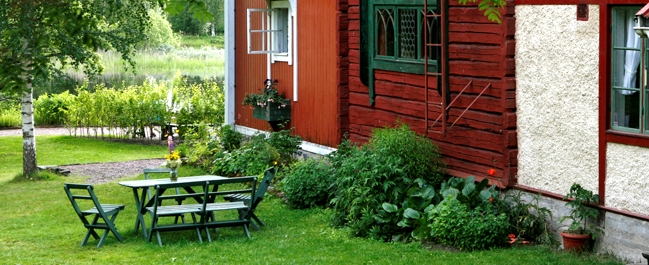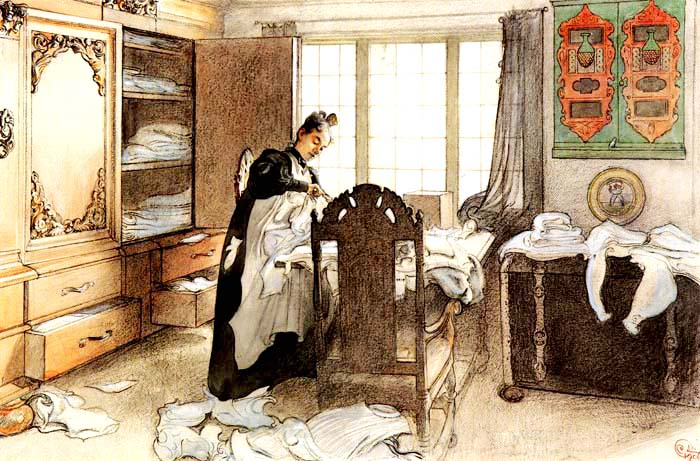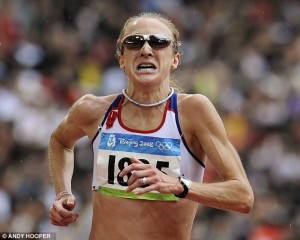
THE SWEDISH PAINTER Carl Larsson created one of the Europe’s most beloved visions of domestic harmony. Dozens of Larsson’s watercolors and paintings featured his immediate surroundings: his wife, Karin; their children, their house and the countryside near Sundborn, the village where they lived in the late nineteenth century. A son confined to a chair in punishment, the children diving into the river, two daughters getting dressed with toys scattered on the floor, the family fishing for crayfish, Karin ironing — these scenes were suffused with light, vibrant color and a deep appreciation for the enchantments of life with children. Larsson’s painting have enjoyed continuous popularity, but they have also at times been the victim of snobbery. This was to be expected. Domestic idealism is disdained in the modern world.

Nevertheless, Lilla Hyttnäs, the house in Sundborn, is one of Europe’s most popular artist’s houses and represents something of a revolution in interior decorating. While many nineteenth century interiors were somber and formal, the Larssons favored bright colors, handcrafts, and cheerful informality. Part of the Arts and Crafts Movement, they were a major inspiration for what we think of as Scandinavian design and even for the contemporary do-it-yourself movement. The house is not the kind of dwelling that would be conceived by a professional decorator. It has the organic quality that can only be the result of gradual evolution, rather than a preconceived scheme.
For those who enjoyed the discussions at this site on life in small houses, (see here, here, and here) the Larsson house, which can be viewed on the family website, may be of especial interest. The Larssons had a way of creating interesting and varied scenes in relatively small rooms. Read More »








![bigstockphoto_Black_Flowers_4800530[1]](https://www.thinkinghousewife.com/wp/wp-content/uploads/2012/07/bigstockphoto_Black_Flowers_48005301-150x105.jpg)